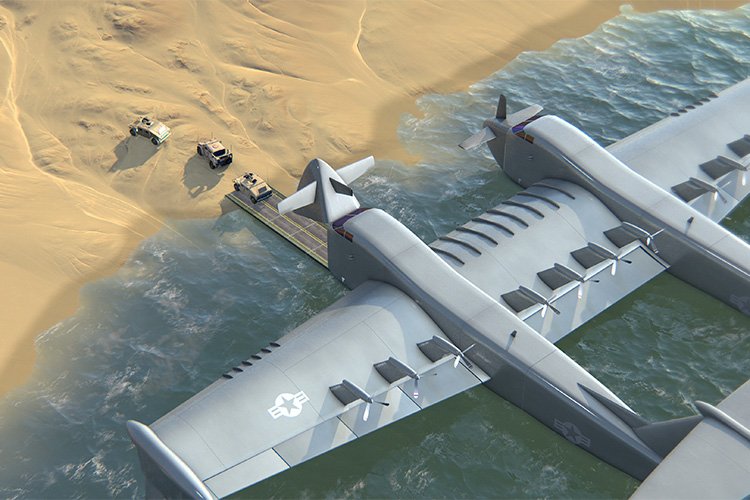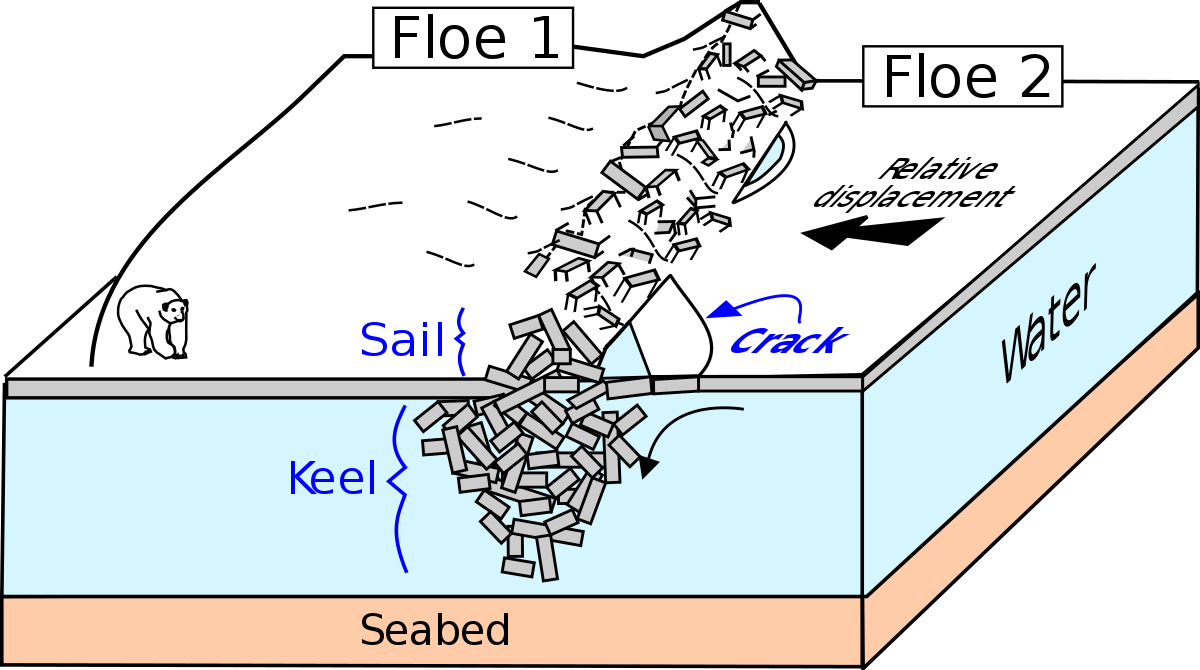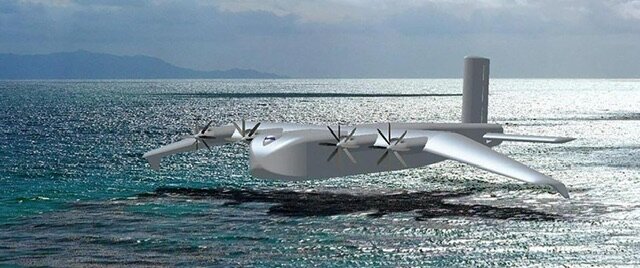You are using an out of date browser. It may not display this or other websites correctly.
You should upgrade or use an alternative browser.
You should upgrade or use an alternative browser.
Are GEVs a good idea?
- Thread starter A_Kid1234
- Start date
- Joined
- 3 September 2006
- Messages
- 1,387
- Reaction score
- 1,216
Hint 1: all existing prototypes have been abandoned.
Hint 2: and even those few prototypes were only financed by the various militaries, for extremely niche applications.
Hint 3: not a single one has successfully operated commercial revenue, AFAIK.
Then it is up to your own definition of good idea vs waste of money.
In my mind, the parallel is very clear with commercial lighter-than-air giants: even though there is an endless stream of con men who claim that their solution will beat all the previous failed attempts, and an apparently equally endless stream of people with more money than smarts who are willing to invest in tech they don't understand, the cycle always ends up the same way: oops...
Hint 2: and even those few prototypes were only financed by the various militaries, for extremely niche applications.
Hint 3: not a single one has successfully operated commercial revenue, AFAIK.
Then it is up to your own definition of good idea vs waste of money.
In my mind, the parallel is very clear with commercial lighter-than-air giants: even though there is an endless stream of con men who claim that their solution will beat all the previous failed attempts, and an apparently equally endless stream of people with more money than smarts who are willing to invest in tech they don't understand, the cycle always ends up the same way: oops...
A_Kid1234
So I can put anything I want here?
- Joined
- 10 May 2023
- Messages
- 66
- Reaction score
- 29
Thanks, do you know about any other unbuilt GEVs?Hint 1: all existing prototypes have been abandoned.
Hint 2: and even those few prototypes were only financed by the various militaries, for extremely niche applications.
Hint 3: not a single one has successfully operated commercial revenue, AFAIK.
Then it is up to your own definition of good idea vs waste of money.
In my mind, the parallel is very clear with commercial lighter-than-air giants: even though there is an endless stream of con men who claim that their solution will beat all the previous failed attempts, and an apparently equally endless stream of people with more money than smarts who are willing to invest in tech they don't understand, the cycle always ends up the same way: oops...
Nik
ACCESS: Top Secret
- Joined
- 15 July 2009
- Messages
- 1,140
- Reaction score
- 812
Beyond 'Fun Size', kin to speed-boats & hydrofoils, you have the problem of wave height.
Yes, such as the 'Caspian Sea Monster' could hop sand-banks and fishing boats but, like big sea-planes --Think 'Sunderland' or the JDF's sea-patrol-- GEVs need mild sea-state to land / take off. Worse, like big hovercraft, GEVs cannot fly above weather...
A proviso: Mega-GEVs would be okay, snag is they'd need nuclear power, be it fission or, safer, fusion. So, perhaps, early 22nd Century ??
Also, IIRC, DARPA propose the 'Liberty Lifter', a big, dual hull 'flying boat' that would be good to ~10,000 ft, yet significantly extend over-water range by flying at ~250 knots in 'ground effect'.

 thedebrief.org
thedebrief.org
FWIW, IIRC, many 'Sunderland' sub-hunters were based at a Scottish loch, with convenient 'prevailing wind', plus a 'rode' that provided waves of convenient height to easily 'unstick', yet not big enough to damage...
Speaking of big hovercraft, our family once crossed English Channel on one of those big hover-ferries. The sea condition was deplorable. Route crossed Goodwin Sands. I repeatedly saw beige 'beach' along wave troughs, was very, very glad I was not a sailor beset on that notoriously lethal bank. Wave length and height were often enough to 'vent' air-cushion, which meant the entire craft tossed, rolled like any short ship in steep sea. Cabin conditions akin to wide-body jet meeting 'Clear Air Turbulence'. Ick. We often had air-gap between butt and seat. Even those passengers not sea-sick were 'significantly impaired'. We lost much of the time we'd saved over a ship-crossing by having to park-up, wait for our wits and guts to settle. Then, re-pack car to locate and replace everything that had been tossed around...
FWIW, the following year, the craft had been lengthened, significantly improving ride, and seat-belts fitted...
Yes, such as the 'Caspian Sea Monster' could hop sand-banks and fishing boats but, like big sea-planes --Think 'Sunderland' or the JDF's sea-patrol-- GEVs need mild sea-state to land / take off. Worse, like big hovercraft, GEVs cannot fly above weather...
A proviso: Mega-GEVs would be okay, snag is they'd need nuclear power, be it fission or, safer, fusion. So, perhaps, early 22nd Century ??
Also, IIRC, DARPA propose the 'Liberty Lifter', a big, dual hull 'flying boat' that would be good to ~10,000 ft, yet significantly extend over-water range by flying at ~250 knots in 'ground effect'.

DARPA Wants to Revolutionize Amphibious Warfare By Developing An Entirely New Class of Flying Boat - The Debrief
DARPA announced it is moving forward with plans to develop an entirely new class of flying boat for use in amphibious military operations.
FWIW, IIRC, many 'Sunderland' sub-hunters were based at a Scottish loch, with convenient 'prevailing wind', plus a 'rode' that provided waves of convenient height to easily 'unstick', yet not big enough to damage...
Speaking of big hovercraft, our family once crossed English Channel on one of those big hover-ferries. The sea condition was deplorable. Route crossed Goodwin Sands. I repeatedly saw beige 'beach' along wave troughs, was very, very glad I was not a sailor beset on that notoriously lethal bank. Wave length and height were often enough to 'vent' air-cushion, which meant the entire craft tossed, rolled like any short ship in steep sea. Cabin conditions akin to wide-body jet meeting 'Clear Air Turbulence'. Ick. We often had air-gap between butt and seat. Even those passengers not sea-sick were 'significantly impaired'. We lost much of the time we'd saved over a ship-crossing by having to park-up, wait for our wits and guts to settle. Then, re-pack car to locate and replace everything that had been tossed around...
FWIW, the following year, the craft had been lengthened, significantly improving ride, and seat-belts fitted...
Scott Kenny
ACCESS: Above Top Secret
- Joined
- 15 May 2023
- Messages
- 6,033
- Reaction score
- 4,903
They're really only useful for limited niche situations, and those niches are too small to fund commercial development. And too costly to get a government to throw money at the problem beyond design studies.
ILikeTanks
ACCESS: Confidential
- Joined
- 16 January 2023
- Messages
- 69
- Reaction score
- 27
The maritime environment of tomorrow, with more frequent storms, icebergs and increasing amount of ships, would make GEV (hovercraft, WIG or compound) sound appealing. It would be impractical in a way to build more canals socially, so the ability to move equally good on any surface inherent to GEV would allow not taking detours but instead utilize the polar ice caps.They're really only useful for limited niche situations, and those niches are too small to fund commercial development. And too costly to get a government to throw money at the problem beyond design studies.
a small WIG like those of today would need to operate less than 1m from the surface. The air cushion generated is porportional to the ratio of wingspan/beam above ground, while the height of waves stays constant. This means that if you take the same WIG, but enlarge it into the scale of a cargo ship (1000 times the original weight, 10 times size in every axis), the operating height would become 10m. (edited)
Now imaging building a WIG displacing 10000 tons, able to operate within the cushion at 30 meters, this would become unaffected by storm.
So it should rather be noted that existing recreational WIGs in fact glide smoothly without rolling you'd typically experience or observe on a speedboat. I believe to that contraty to popular belief, the seakeeping of a WIG can actually be superior to that of displacement ships of similar size below a certain thereshold of waves, and this is scalable (in a large WIG that thereshold would be higher than the vast majority of sea conditions).
A large WIG with mean operating height above 10m would be ignoring most sea conditions below as long as the vessel keeps on moving. A WIG with same mass as a container ship would be capable of riding on an air cushion higher than 30m, a scale that would even allow operation above rural areas and tsunamis. Compare this to a container ship in today, and see the superior seakeeping (but not stopping) (however this is not improbable, large vehicles such as ships and airplanes don't stop normally on their voyages).
Nik
ACCESS: Top Secret
- Joined
- 15 July 2009
- Messages
- 1,140
- Reaction score
- 812
A caution: Arctic sea-ice may be thinning, year on year...
... but pressure ridges...

 en.wikipedia.org
...may still exceed a dozen metres height above 'mean surface'.
en.wikipedia.org
...may still exceed a dozen metres height above 'mean surface'.
How such, in contrary wind, could affect a 'low flying' GEV is not something I'd care to experience. Worst case, the 'washboard' effect may destabilise altitude regulation...
Really big GEVs, of course, may 'ride' much higher than their 'midi' kin...
... but pressure ridges...

Pressure ridge (ice) - Wikipedia
How such, in contrary wind, could affect a 'low flying' GEV is not something I'd care to experience. Worst case, the 'washboard' effect may destabilise altitude regulation...
Really big GEVs, of course, may 'ride' much higher than their 'midi' kin...
Similar threads
-
-
Large Weilandcraft is built
- Started by Vahe Demirjian
- Replies: 0
-
Naval Surface Warfare Center/NAVAIR Battleforce Seaplane designs
- Started by Stargazer
- Replies: 1
-
Analytic Considerations for Lifting Ascent Launch Vehicle Trajectories
- Started by martinbayer
- Replies: 3
-


